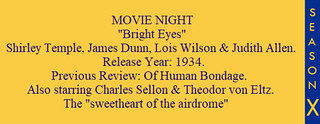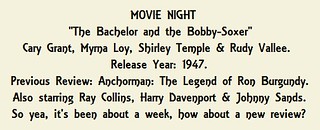 Review #1372: Fort Apache.
Review #1372: Fort Apache.Cast:
John Wayne (Capt. Kirby York), Henry Fonda (Lt. Col. Owen Thursday), Ward Bond (Sgt. Major Michael O'Rourke), Shirley Temple (Miss Philadelphia Thursday), John Agar (Lt. Michael Shannon "Mickey" O'Rourke), Dick Foran (Sgt. Quincannon), Pedro Armendariz (Sgt. Beaufort), Miguel Inclan (Cochise), Victor McLaglen (Sgt. Festus Mulcahy), Guy Kibbee (Capt. Wilkens), Anna Lee (Emily Collingwood), George O'Brien (Capt. Sam Collingwood), Jack Pennick (Sgt. Daniel Schattuck), Irene Rich (Mary O'Rourke), and Grant Withers (Silas Meacham) Directed by John Ford (#398 - The Last Hurrah and #1324 - 3 Bad Men, and #1349 - Stagecoach)
Review:
"Anybody can direct a picture once they know the fundamentals. Directing is not a mystery, it's not an art. The main thing about directing is: photograph the people's eyes."
Legends can be an interesting thing to think about when relating to film, depending on who has the vision to make it come alive more so than if one just went to a museum or read a book. As such, it should prove no surprise that this was based on a prior work, in this case a 1947 short story "Massacre", written by James Warner Bellah in The Saturday Evening Post, which was adapted to film by Frank Nugent. It had utilized two historical battles involving Native Americans in their fight against the US Army in the 19th century with the Fetterman Fight and The Battle of Little Big Horn, particularly the leader of the latter battle, George Armstrong Custer, whose certainly has had a debatable reputation that has certainly had varied opinions over his leadership decisions in the battle that led to his death, with the efforts of his widow campaigning on his behalf helping to mold Custer into a legend for a great deal of the 20th century. This is a film that has its own view on Native American alongside a parallel of Custer in its film, which certainly does seem a bit different from the old-fashioned fare from Westerns of its time (compare this film to Unconquered, for example). It is the first film of what is referred to as director-producer Ford's "cavalry trilogy", with each of the films (the others being She Wore a Yellow Ribbon and Rio Grande) featuring Wayne as the main star along with adapting short stories from Bellah in each of the films. It should prove no surprise to see Wayne and Fonda in a Western, since they both stood out in their decades-long careers for their work in them, with the former making roughly one-to-three films a year for this decade; Fonda had slowed his versatile career due to serving in World War II, and he decided to return to the stage, not appearing again in a feature role for the next seven years. This happened to be the fifth-to-last role for Temple along with the first for Agar (an Army Air Corps man who served in World War II), with the two having married three years earlier. One particular person who found themselves a break was Ben Johnson, the champion rodeo cowboy-turned stuntman that found himself with an acting contract because of his help with stopping a runaway wagon from a potential deadly accident.
One will find themselves impressed with the way that Ford handles this capable tale of the nature of leadership and heroism with solid foundation to make fine entertainment. This is a film that Fonda and Wayne share with equal strength of solid acting that match like bighorned sheep on the grass. On one side is the tactically stubborn but capable humane performance from Fonda and on the other is the practical reliability of Wayne in the face of anyone. Bond makes for a fine presence, engaging with rugged rough charm that made him a character actor worth having throughout the years. Temple and Agar are okay, with fair chemistry. Foran and the others make for capable camaraderie through the moments they have on screen in making this regiment as interesting as it needs to be when setting up its conflict - whether within or with its possible enemy. The battles certainly are well-executed, even when one knows the inevitability provided by its inspiration, particularly with its lasting point about legends and glory in perspective of the one who writes it, whether that seems right or not. One is left in awe of the towering Monument Valley when seeing it in the film, particularly with the use of infrared film stock, which was utilized in outdoor sequences to enhance the scenery. There were a few quibbles with the script with stuff one might not expect. Concerns involved a manure pile scene, a shot of dead troopers, keeping contact with the Humane Society when dealing with animals, and an order to not show a toilet on screen (I kid you not). In any case, this is a relatively interesting film, one with a solid cast and ambitions beyond the usual Western of conflict that make it a worthwhile Ford film for its era.
Overall, I give it 9 out of 10 stars.


